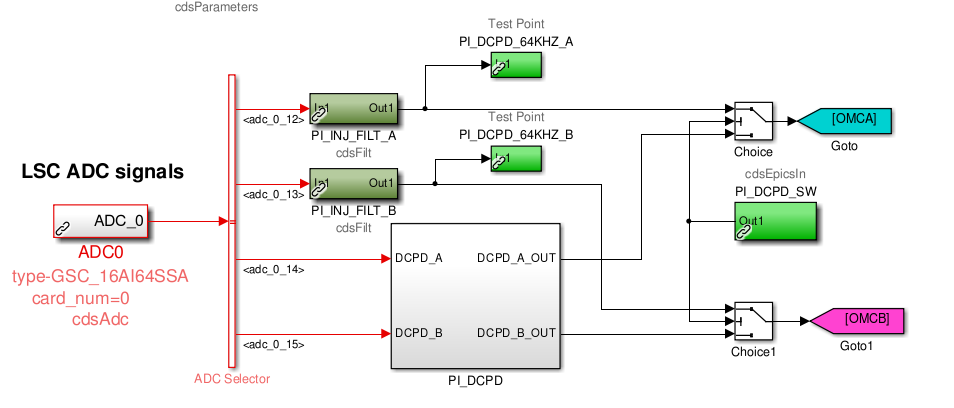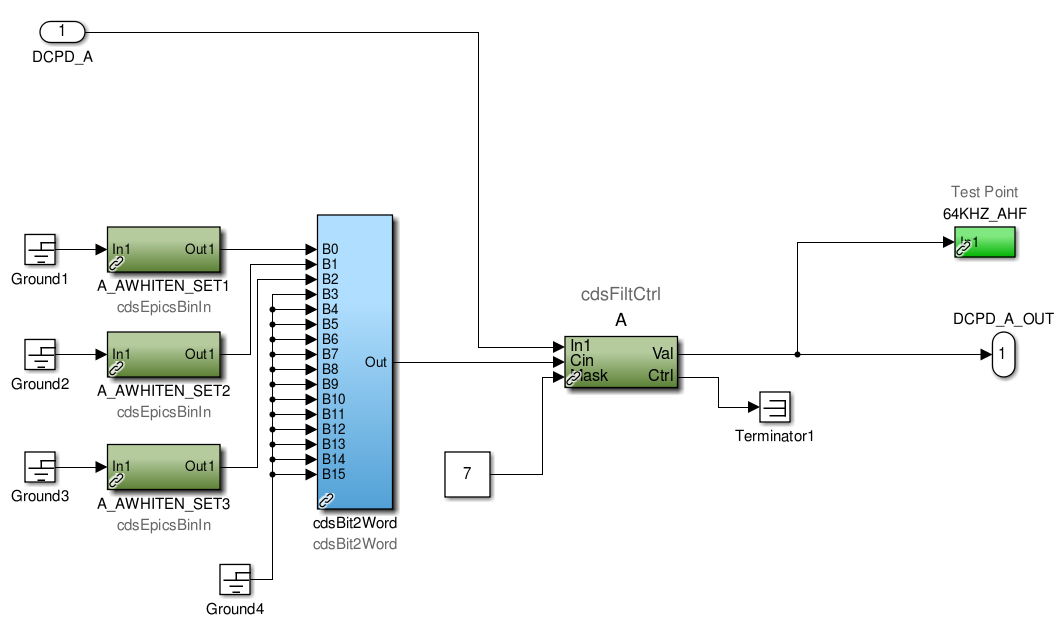omc_pi model change. WP5957
Kiwamu, Carl, Dave:
h1omcpi was modifed to read in the two new ADC channels. Two new 64kHz channels were added to the commissioning frame, 8 existing 2kHz channels were added to the science frame for permanent archival (H1:OMC-PI_DOWNCONV[1-4]_DEMOD_[I,Q]_OUT_DQ)
h1 SUS PI model changes
Ross, Carl, Dave:
new h1susitmpi,h1susetm[x,y]pi models were installed.
DAC card replacement in SUS B123 and H2A WP5954, WP5953
Richard, Fil, Dave, Jim
h1susb123 and h1sush2a were powered down. The first DAC card in each IO Chassis were replaced. The new DAC cards both pass the autocal. The ADCs were power cycled at the same time.
BSC ISI code change WP5961
Brian, Jim W, Jim, Dave
a new isi2stagemaster.mdl file were installed. All BSC ISI models were rebuilt and restarted. (h1isi[bs, itmx, itmy, etmx, etmy]). Part of this change was to remove the user model's DACKILL part. Since this part registers itelf with the IOP model on startup, the code change required a restart of all the models on h1seib[1,2,3,ex,ey] to resync the IOP with the DAC clients.
We also found that the HEPI watchdog reset button does not work on newer Ubuntu 14 machines. This was tracked to the perl script wd_dackill_reset.pl script requires the CAP5 module, not loaded on newer machines. Perhaps these old PERL scripts should be replaced with newer PYTHON scripts.
DAQ upgrades and new QFS server WP5964
Dan, Carlos Jim, Dave:
Dan upgraded the QFS servers h1ldasgw0, h1ldasgw1 and h1dmtqfs0 Solaris machines. These were fully patched, and the QFS file sysem they control was file-system-checked.
Dan installed a new QFS server called h1ldasgw2. This is a Sun X2200, with redundent fiber channel ports which directly connect to the two Qlogic switches.
In the new configuration, h1ldasgw0 only exports /ldas-h1-frames to h1fw0 on the private LAN (no longer exports to h1nds0). h1ldasgw1 only exports /cds-h1-frames to h1fw1 on the private LAN (no longer exports to h1nds1). h1ldasgw2 NFS exports both /ldas-h1-frames and /cds-h1-frames to both nds machines in read-only mode.
The hope is that the frame writers will be more stable if their NFS/QFS server is not also serving NDS requests.
h1nds1's RAM was doubled from 24GB to 48GB by the insertion of 3*8GB SIMM cards harvested from x1work.
ASC new code
Jenne, Jim, Dave
new h1asc model was installed. We were surprised that an excitation was started immediately once the model got running. This looks like a script constantly running the excitation of H1:ASC-POP_X_PZT_YAW_EXC
Does anyone know what is doing this?
DAQ Restart
Daniel, Dave:
The DAQ was restarted to support all of the above model changes. Latest Beckhoff INI files were installed.
Tesing Scientific Linux 7.2 on LHO DMT WP5969
Dan:
Dan is upgrading h1dmt2 from SL6.5 to SL7.2 as a test bed for the new OS in preparation for a pre-ER9 upgrade.
cdswiki upgrade WP5956
Jonathan, Carlos:
work is underway to upgrade the cdswiki machine





















